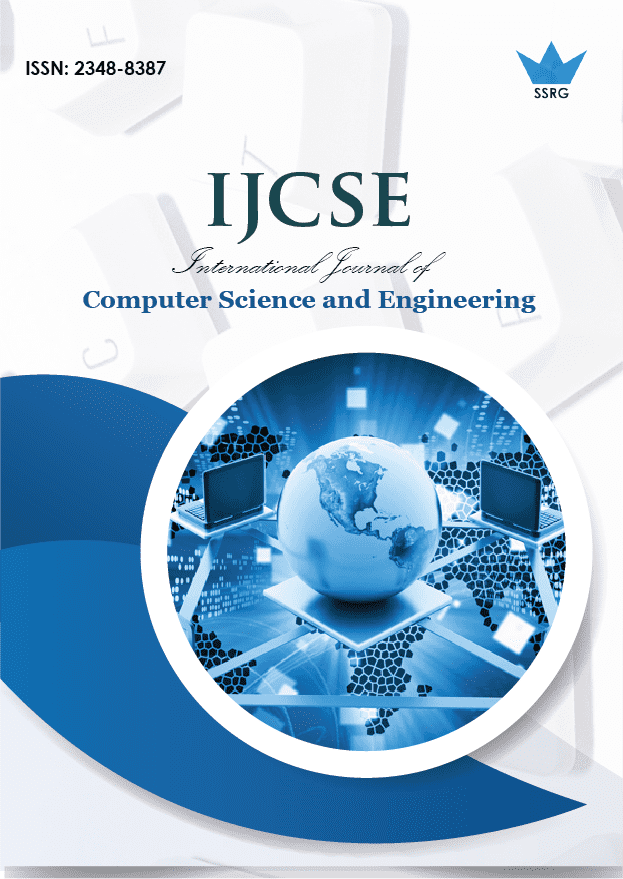Zero Trust in Cloud Computing: An AI-Driven Approach to Enhanced Security

| International Journal of Computer Science and Engineering |
| © 2025 by SSRG - IJCSE Journal |
| Volume 12 Issue 4 |
| Year of Publication : 2025 |
| Authors : Divya Kodi |
How to Cite?
Divya Kodi, "Zero Trust in Cloud Computing: An AI-Driven Approach to Enhanced Security," SSRG International Journal of Computer Science and Engineering , vol. 12, no. 4, pp. 1-8, 2025. Crossref, https://doi.org/10.14445/23488387/IJCSE-V12I4P101
Abstract:
With the new age of cloud computing, businesses have started advancing their workloads from traditional infrastructure to the Cloud. However, the rapid adoption of cloud services brought significant challenges around security. Trendy security paradigms built on the conservative perimeter defence, involving measures such as firewalls and intrusion detection systems, are, simply put, unable to tackle the advanced and adaptive stealthy threat that can exploit cloud computing premises. Building perimeter-based models assumes trustworthiness behind the perimeter, an obsolete assumption in the ever decentralized and interconnected digital world. This is shifting the focus of cybersecurity away from the traditional castle-and moat mentality and toward a more flexible security architecture that can authenticate and authorize access regardless of where on the network the user is connecting from. This paradigm shift towards a decentralized model built on "never trust, always verify" has pushed us to introduce the so-called "Zero Trust" security architecture. Zero Trust recognizes that threats can come from without or within - and therefore, all requests should be treated as malicious until proven otherwise. Zero Trust principles include validating identity, implementing least privilege access, utilizing micro-segmentation and performing continuous monitoring. These three components reduce the risk of data breaches, internal attacks and unauthorized access. The Silent Giant of Zero Trust: Cloud Security: Valid Application of Zero Trust to secure the holistic cloud environment. AI based tech - for example, machine learning, behavioral analysis, and automated threat detection- can turbo-charge Zero Trust via continuous user activity monitoring, real-time collaboration traffic analysis, and prediction of malicious patterns. These challenges can be tackled using Zero Trust and AI to improve threat detection and incident response times, enable data breach prevention and prediction capabilities, etc. Machine learning algorithms can also analyze massive amounts of data to uncover anomalies, such as attempts to access files without authorization or a user's unusual behaviour that could point to a threat. AI can also assist enterprises in responding to these breaches, so organizations will not just be aware of potential breaches but can respond in real-time, using automated actions such as blocking access to compromised systems or isolating systems believed to be compromised. Also, before any AI-based forecast turns into an organization threat, organizations would rectify such vulnerabilities, while this preventive approach will lead to a better security posture.
Keywords:
Cloud computing, Zero trust, Security, Artificial Intelligence, Security threat.
References:
[1] Abraham Itzhak Weinberg, and Kelly Cohen, “Zero Trust Implementation in the Emerging Technologies Era: Survey,” arXiv, pp. 1-15, 2024.
[CrossRef] [Google Scholar] [Publisher Link]
[2] Mohammed Ashfaaq M. Farzaan et al., “AI-Enabled System for Efficient and Effective Cyber Incident Detection and Response in Cloud Environments,” arXiv, pp. 1-18, 2024.
[CrossRef] [Google Scholar] [Publisher Link]
[3] Aptin Babaei et al., “A Review of Machine Learning-Based Security in Cloud Computing,” arXiv, pp. 1-9, 2023.
[CrossRef] [Google Scholar] [Publisher Link]
[4] Yuqing Wang, and Xiao Yang, “Research on Enhancing Cloud Computing Network Security Using Artificial Intelligence Algorithms,” arXiv, pp. 1-10, 2025.
[CrossRef] [Google Scholar] [Publisher Link]
[5] Arunkumar Thirunagalingam, “Enhancing Data Governance through Explainable AI: Bridging Transparency and Automation,” International Journal of Sustainable Development through AI, ML and IoT, vol. 1, no. 2, pp. 1-12, 2022.
[Google Scholar] [Publisher Link]
[6] Mohanarajesh Kommineni, “Explore Knowledge Representation, Reasoning, and Planning Techniques for Building Robust and Efficient Intelligent Systems,” International Journal of Inventions in Engineering & Science Technology, vol. 7, no. 1, pp. 105-114, 2021.
[Google Scholar] [Publisher Link]
[7] Padmaja Pulivarthy, “Enhancing Dynamic Behaviour in Vehicular Ad Hoc Networks through Game Theory and Machine Learning for Reliable Routing,” International Journal of Machine Learning and Artificial Intelligence, vol. 4, no. 4, pp. 1-13, 2023.
[Google Scholar] [Publisher Link]
[8] Venu Madhav Aragani, Praveen Kumar Maroju, and Lakshmi Narasimha Raju Mudunuri, “Efficient Distributed Training through Gradient Compression with Sparsification and Quantization Techniques,” SSRN, pp. 1-14, 2021.
[CrossRef] [Google Scholar] [Publisher Link]
[9] Swathi Chundru, “Seeing through Machines Leveraging AI for Enhanced and Automated Data Storytelling,” International Journal of Innovations in Scientific Engineering, vol. 18, no.1, pp. 47-57, 2023.
[Google Scholar] [Publisher Link]
[10] Sureshkumar Somanathan, “Optimizing Cloud Transformation Strategies: Project Management Frameworks for Modern Infrastructure,” International Journal of Applied Engineering & Technology, vol. 5, no. 1, pp. 222-232, 2023.
[Google Scholar] [Publisher Link]
[11] Muniraju Hullurappa, “Intelligent Data Masking: Using GANs to Generate Synthetic Data for Privacy-Preserving Analytics,” International Journal of Inventions in Engineering & Science Technology, vol. 9, pp. 9, 2023.
[Publisher Link]
[12] Sudheer Panyaram, “Digital Transformation of EV Battery Cell Manufacturing Leveraging AI for Supply Chain and Logistics Optimization,” International Journal of Innovations in Scientific Engineering, vol. 18, no. 1, pp. 78-87, 2023.
[Publisher Link]
[13] Venu Madhav Aragani, “Unveiling the Magic of AI and Data Analytics: Revolutionizing Risk Assessment and Underwriting in The Insurance Industry,” International Journal of Advances in Engineering Research, vol. 24, no. 6, pp. 1-13, 2022.[CrossRef] [Google Scholar]

 10.14445/23488387/IJCSE-V12I4P101
10.14445/23488387/IJCSE-V12I4P101